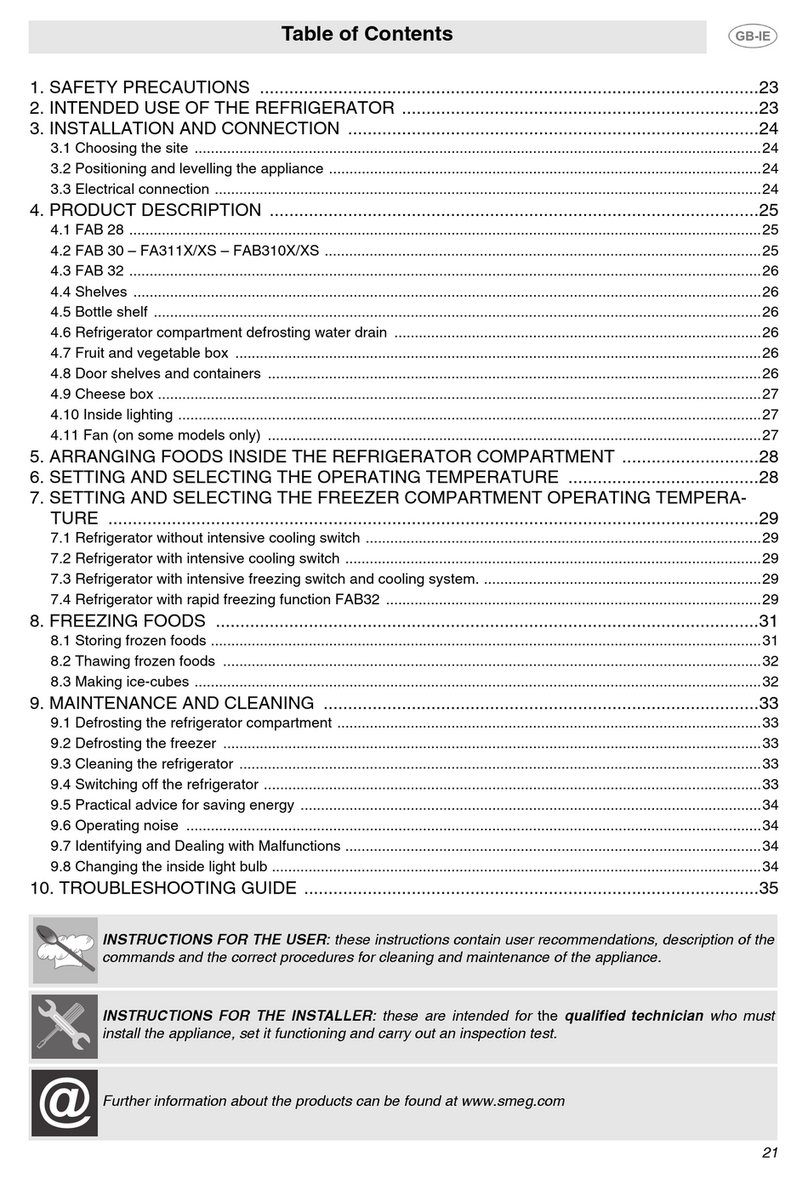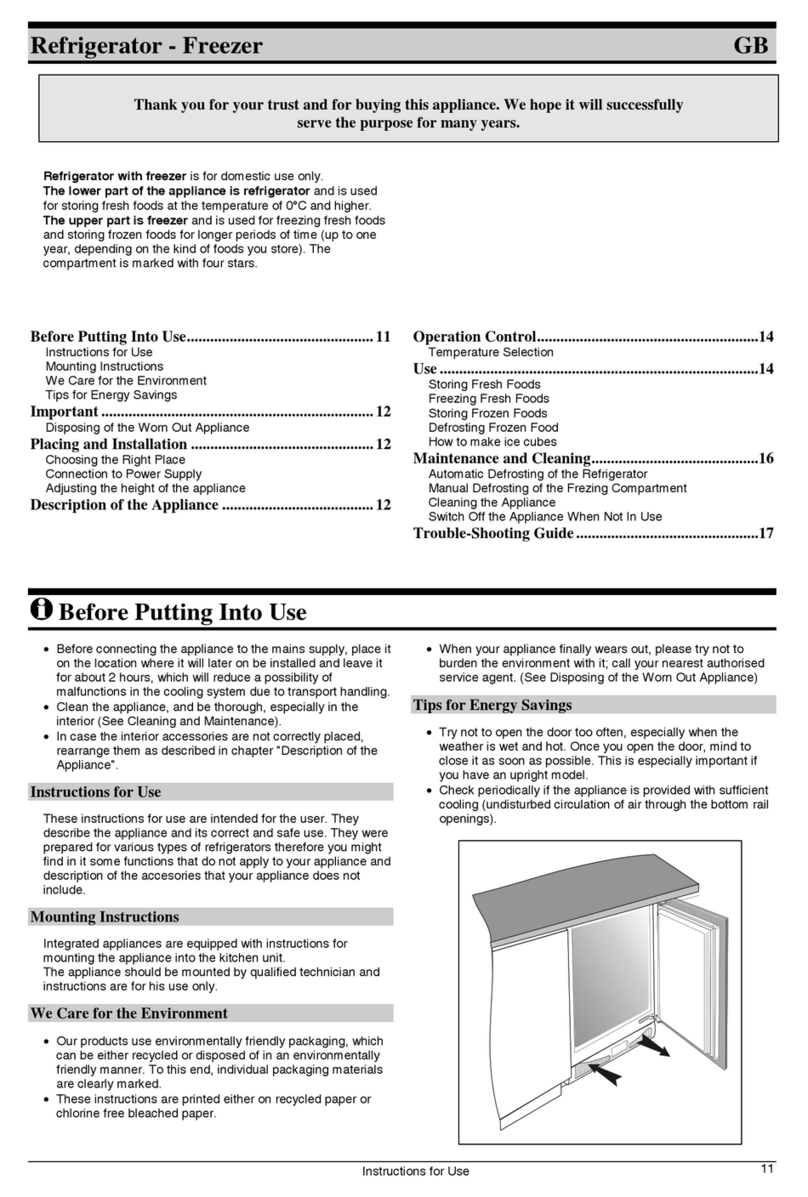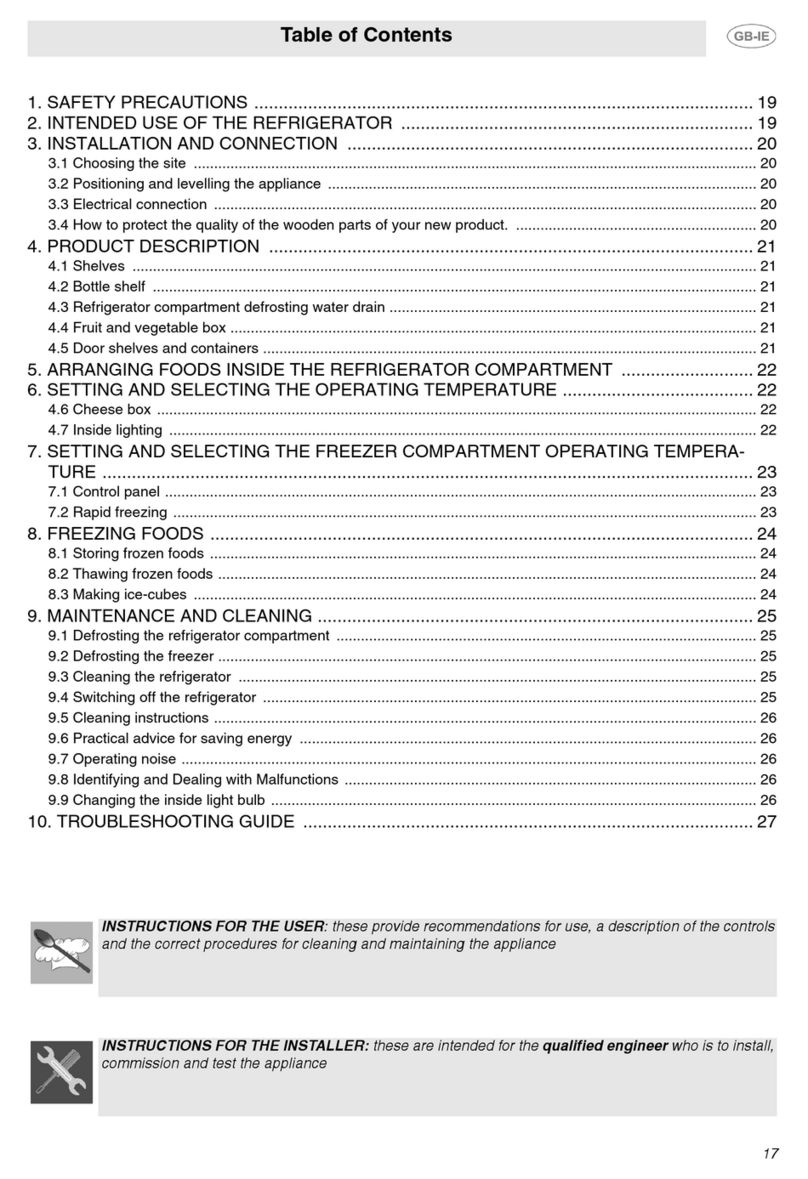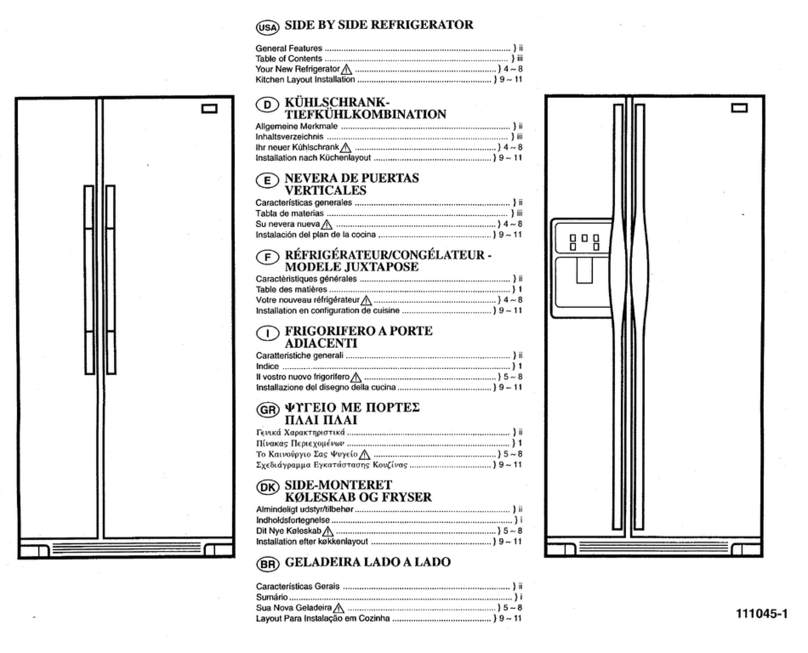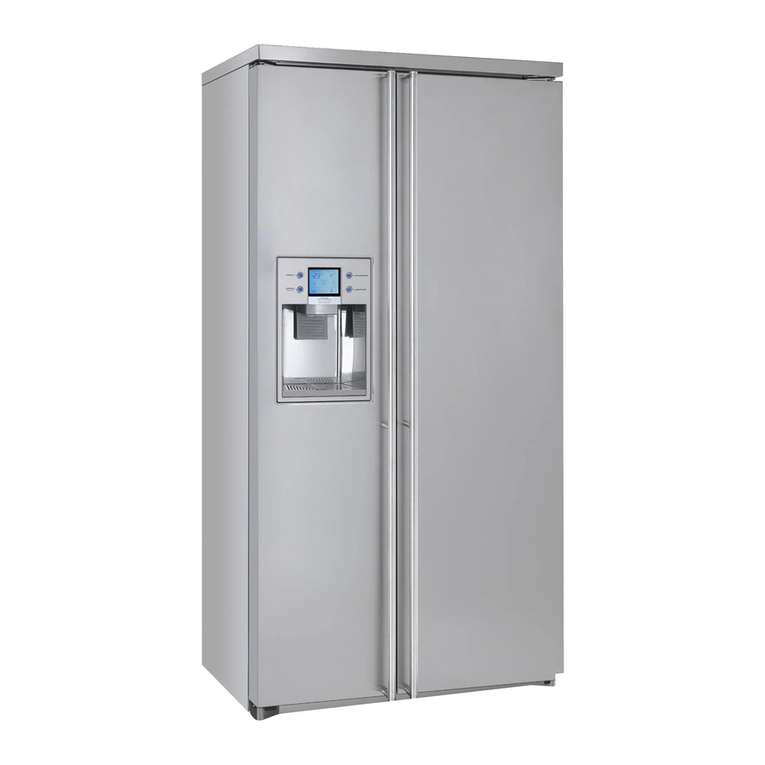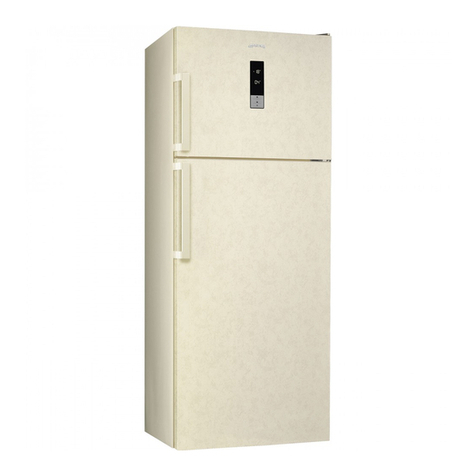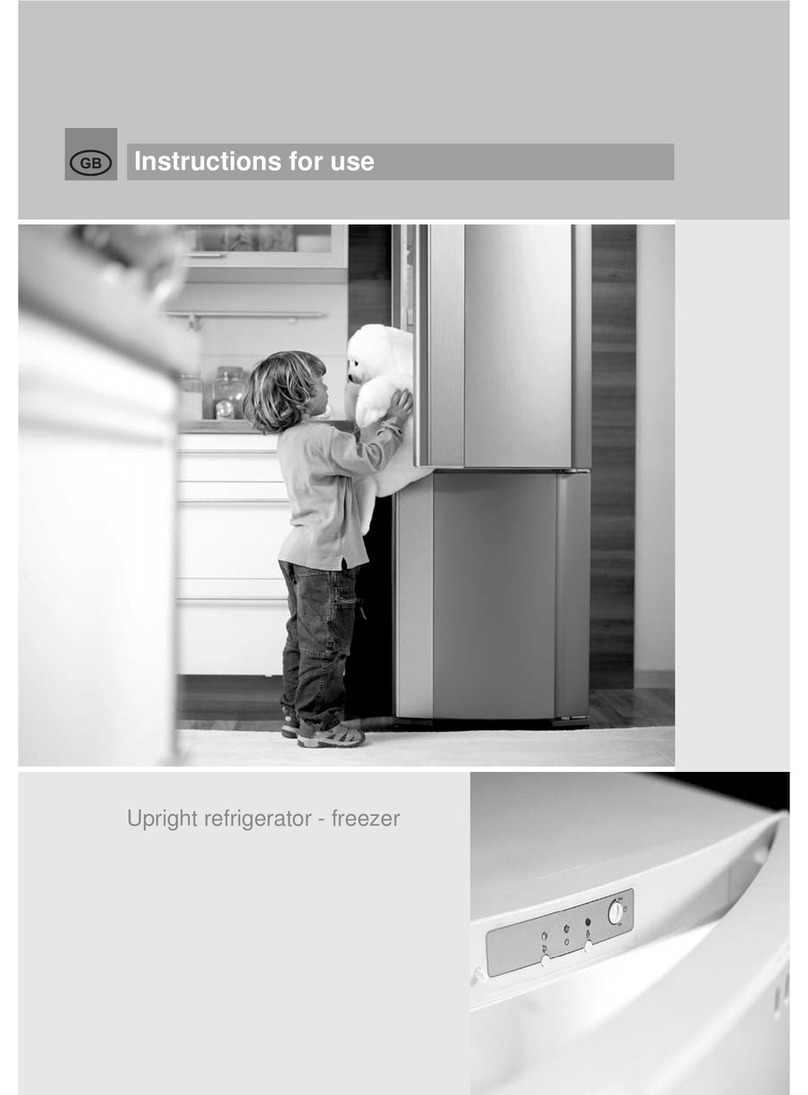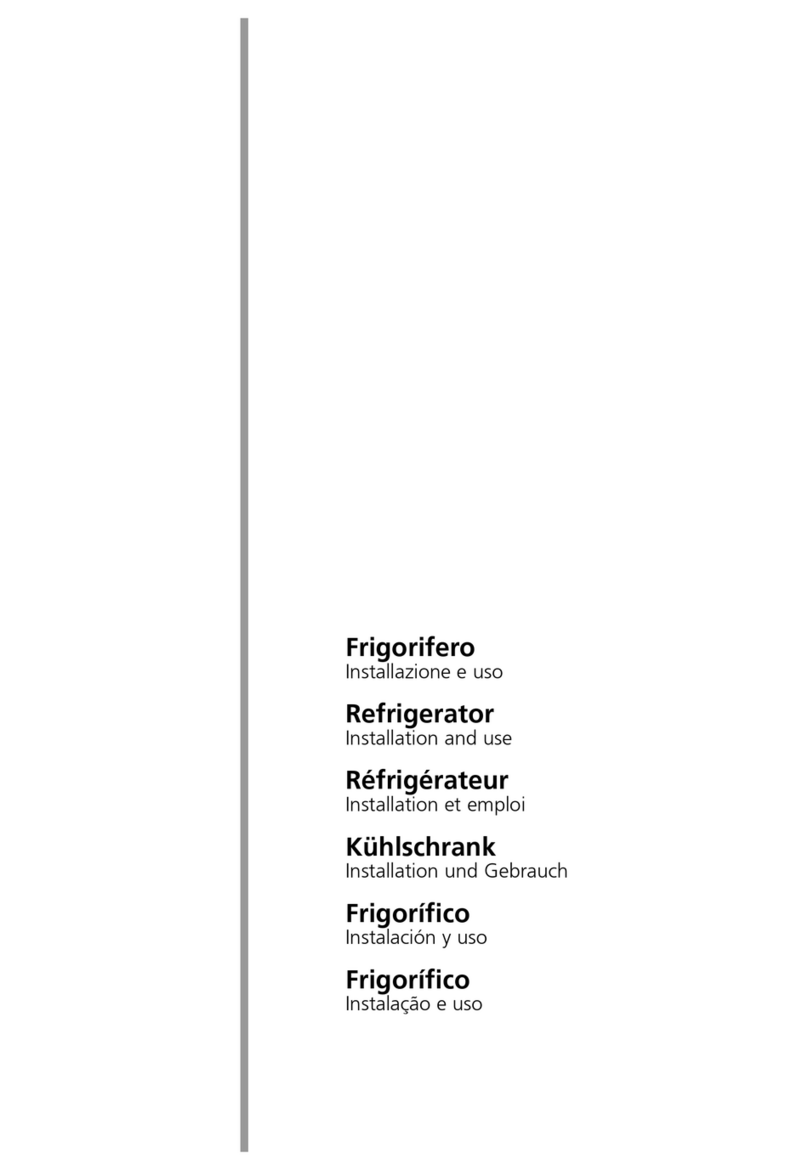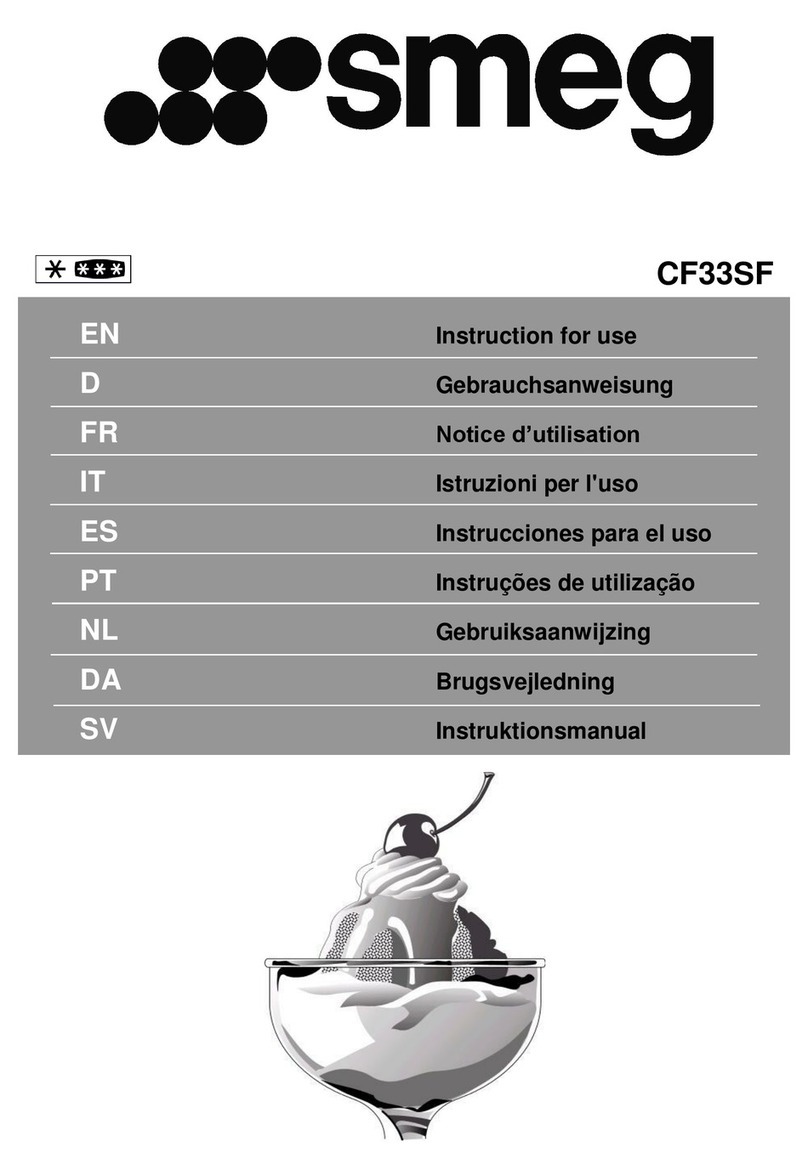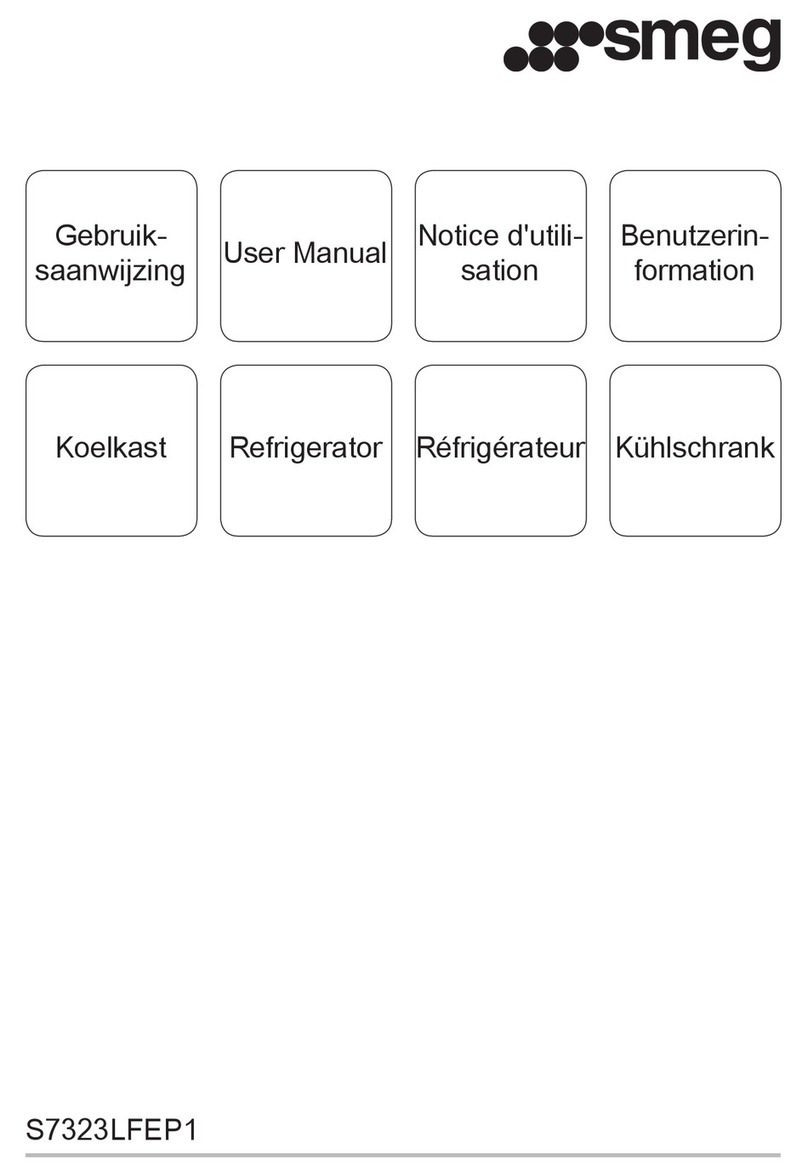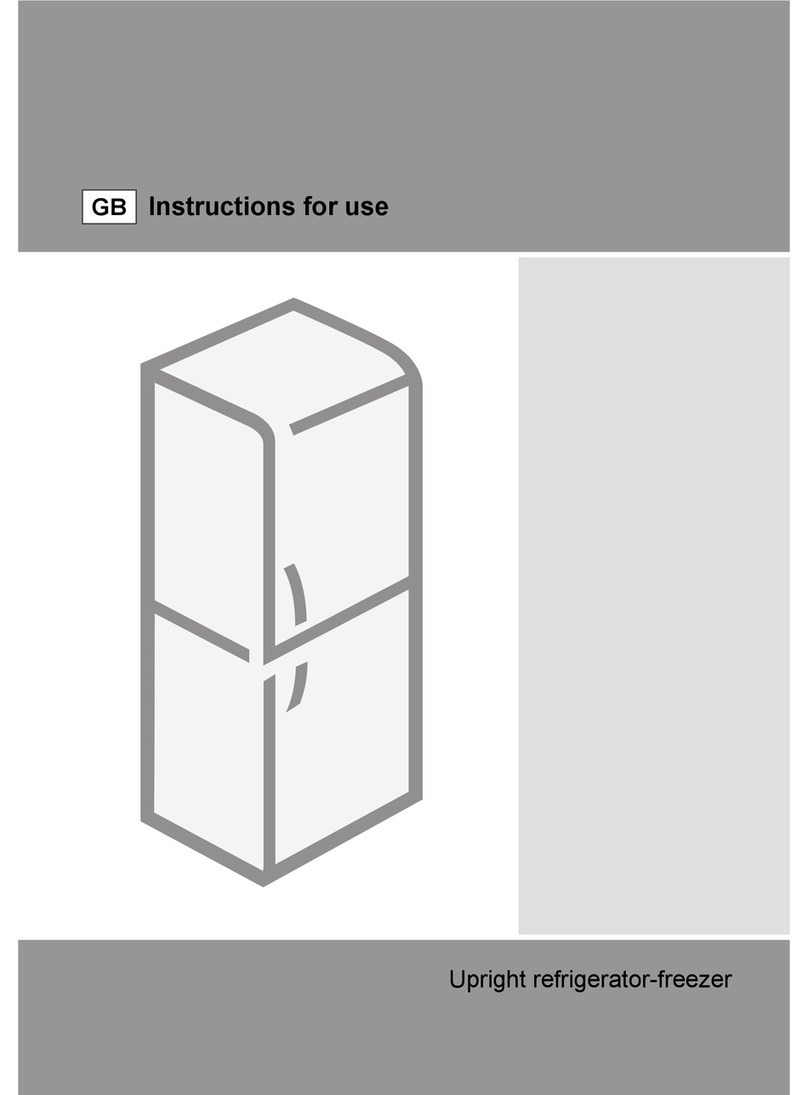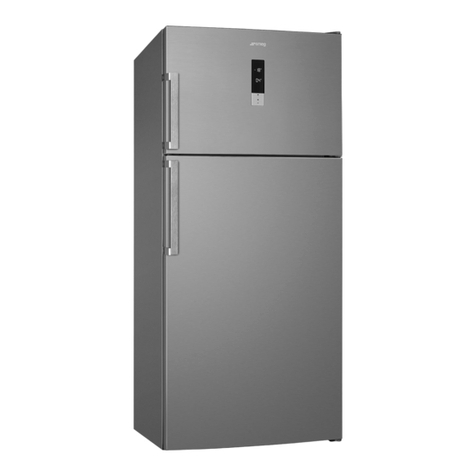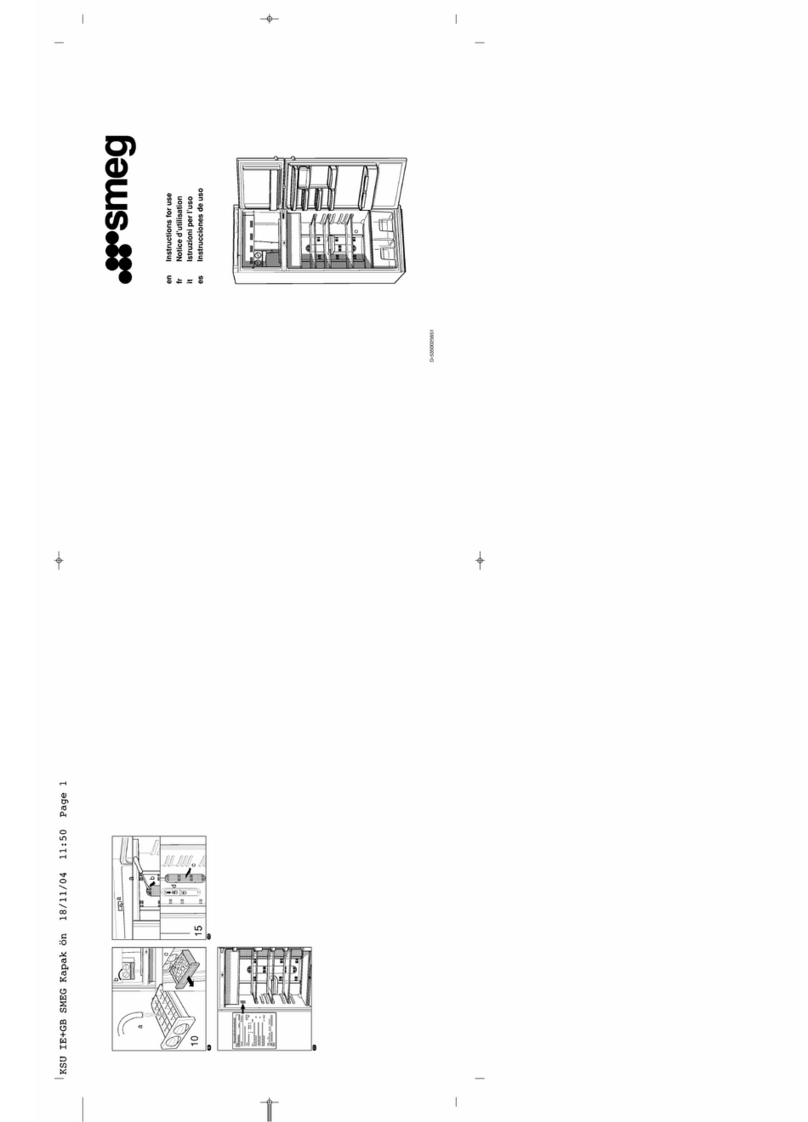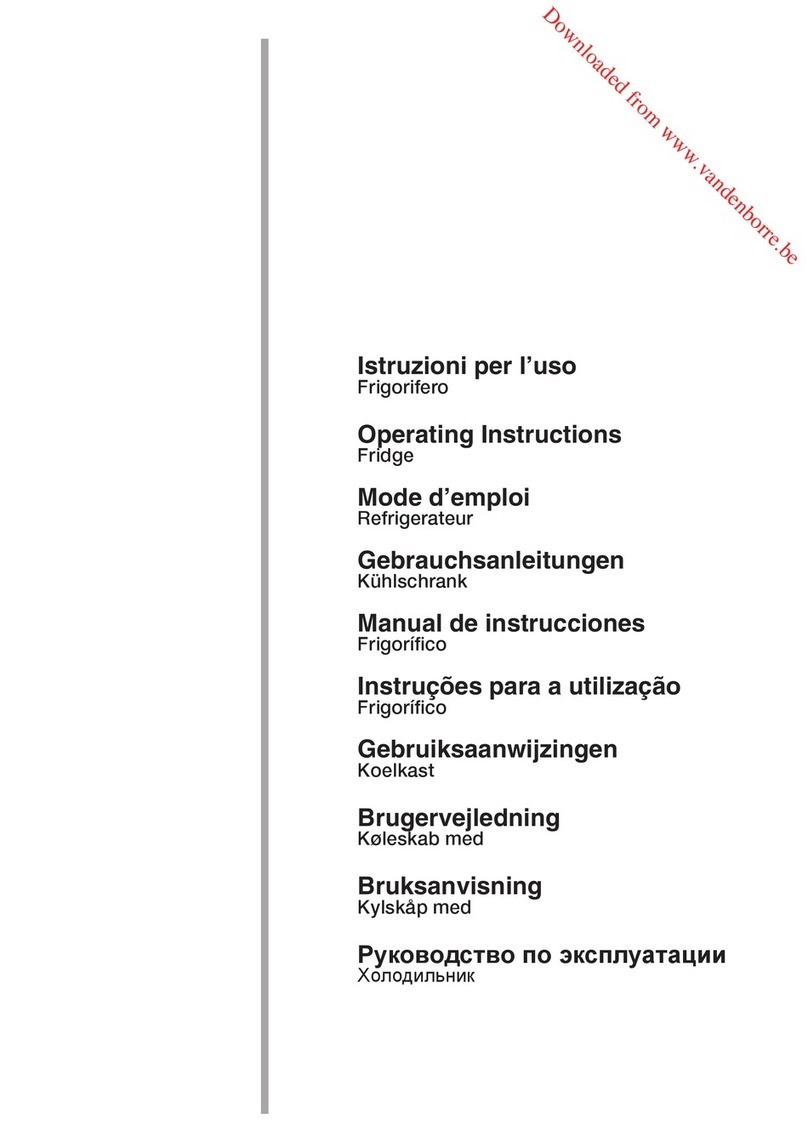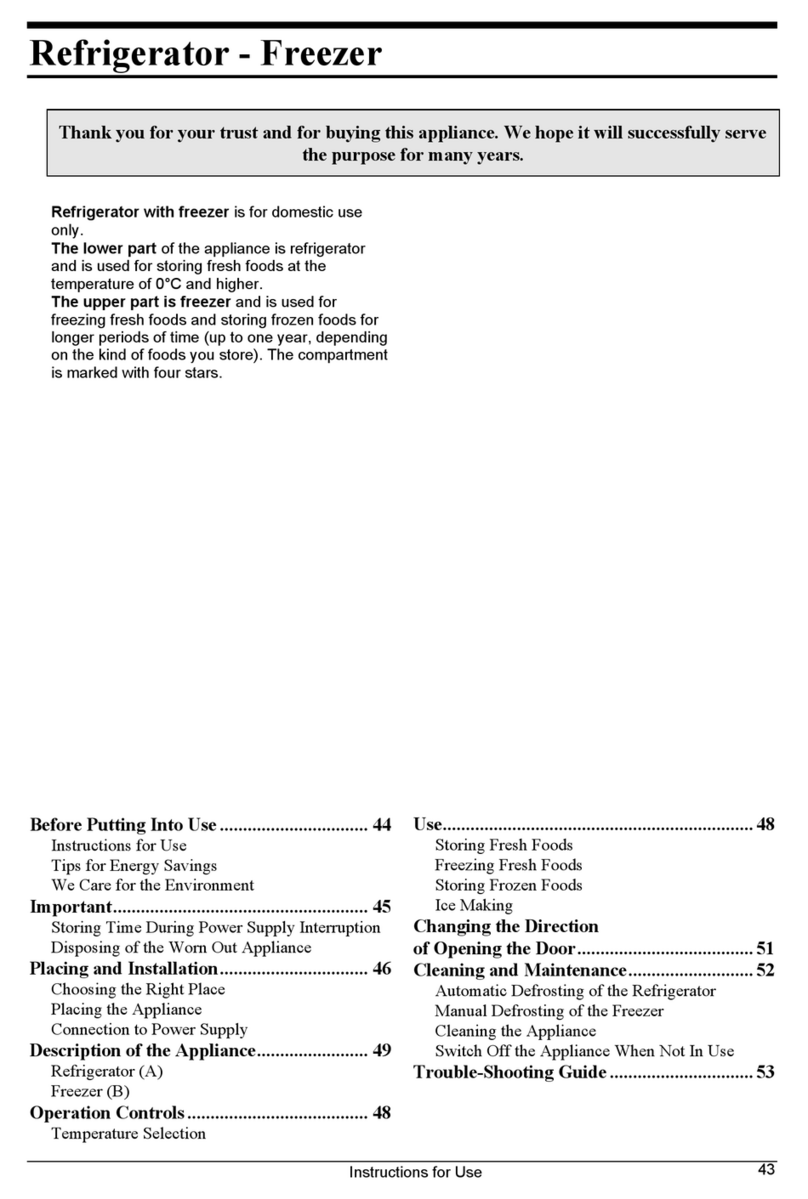
Use
19
Storage life table
3.6 Noises during operation
The refrigerator and freezer compartments
are cooled by means of a compression
system. In order to maintain the preset
temperature inside the refrigerator and
freezer compartments, the compressor
comes into operation in response to the
level of cooling required, and may operate
continuously if necessary. When the
compressor starts to function, it creates a
buzzing noise which generally diminishes in
intensity after a few minutes.
Another normal operating noise of the
appliance is a gurgling due to the coolant
flowing through the pipes in the circuit. This
noise is normal and does not indicate an
appliance malfunction. If it becomes too
loud, this may mean that there are other
causes. Checks must then be made to
ensure that:
• The refrigerator is properly levelled on
the floor and does not vibrate when the
compressor is in operation: if this is not
the case, adjust the appliance's feet until
it is level;
• The drawers, shelves and trays on the
door are correctly positioned in their
holders: if they are not, put them in
correctly;
• Bottles and containers on the various
shelves are stable and not touching each
other: otherwise, the vibration resulting
from compressor operation could
generate noise;
• Do not place the refrigerator in such a
way that it is in contact with furniture or
other household appliances.
3.7 Turning the appliance off
Whenever the appliance is to remain
unused for long periods, it should be
switched off.
1. Return thermostat knob to the "0"
position.
2. Unplug the appliance from the wall
socket.
3. Empty the compartments.
4. Once the freezer has fully defrosted, dry
any residual accumulated moisture with
a tea towel.
Foodstuff Time
Eggs, smoked meats,
marinated foods, cheese max 10 days
Root vegetables max 8 days
Butter max 7 days
Pastries, fruit, ready meals,
fresh meat max 2 days
Fish, minced meat, seafood max 1 day
NOTE:
Leave the door ajar to ensure that
moisture and stagnant air do not
cause unpleasant odors.
NOTE:
Wait at least 5 minutes before
restarting the appliance or
plugging it in so as not to damage
the compressor.
